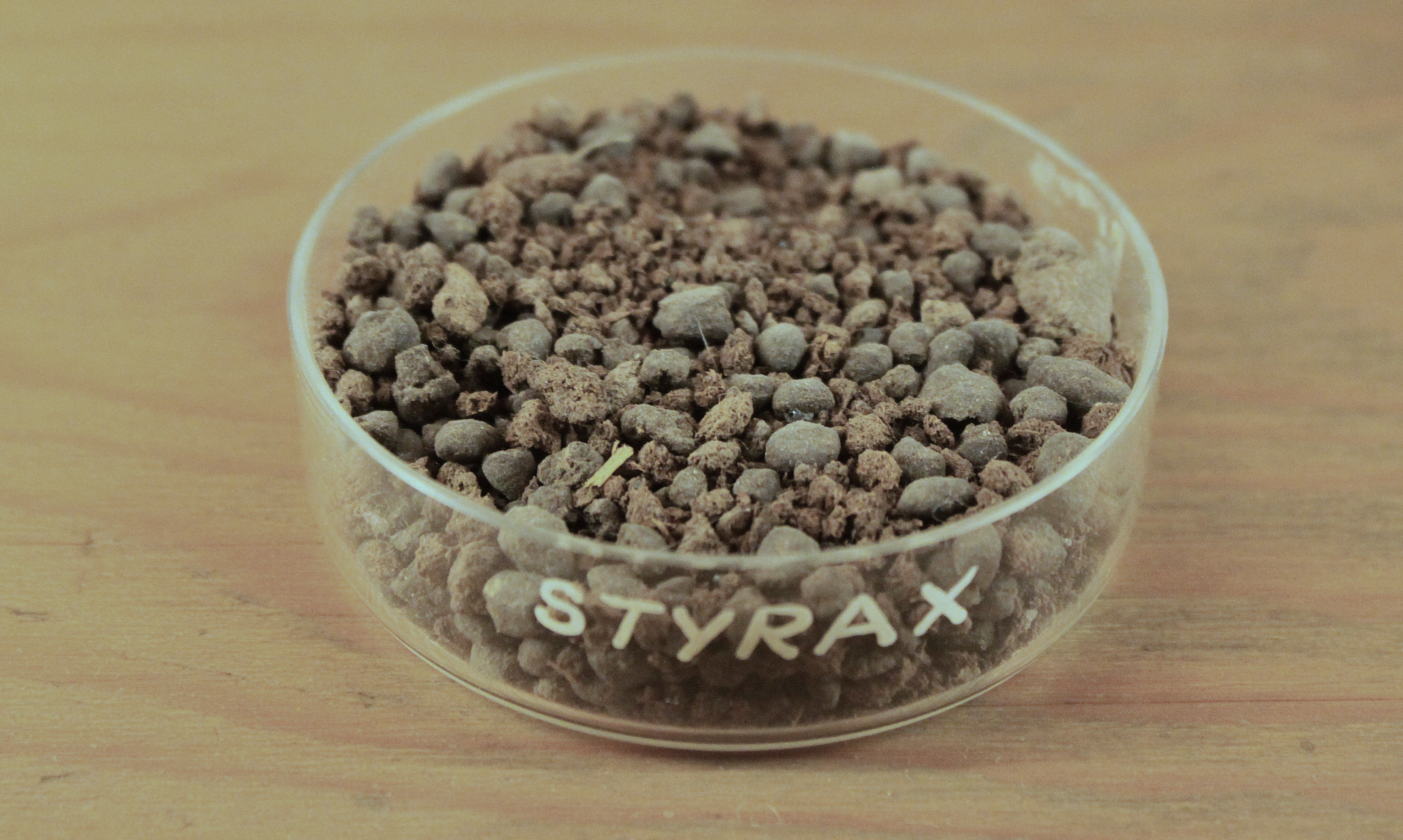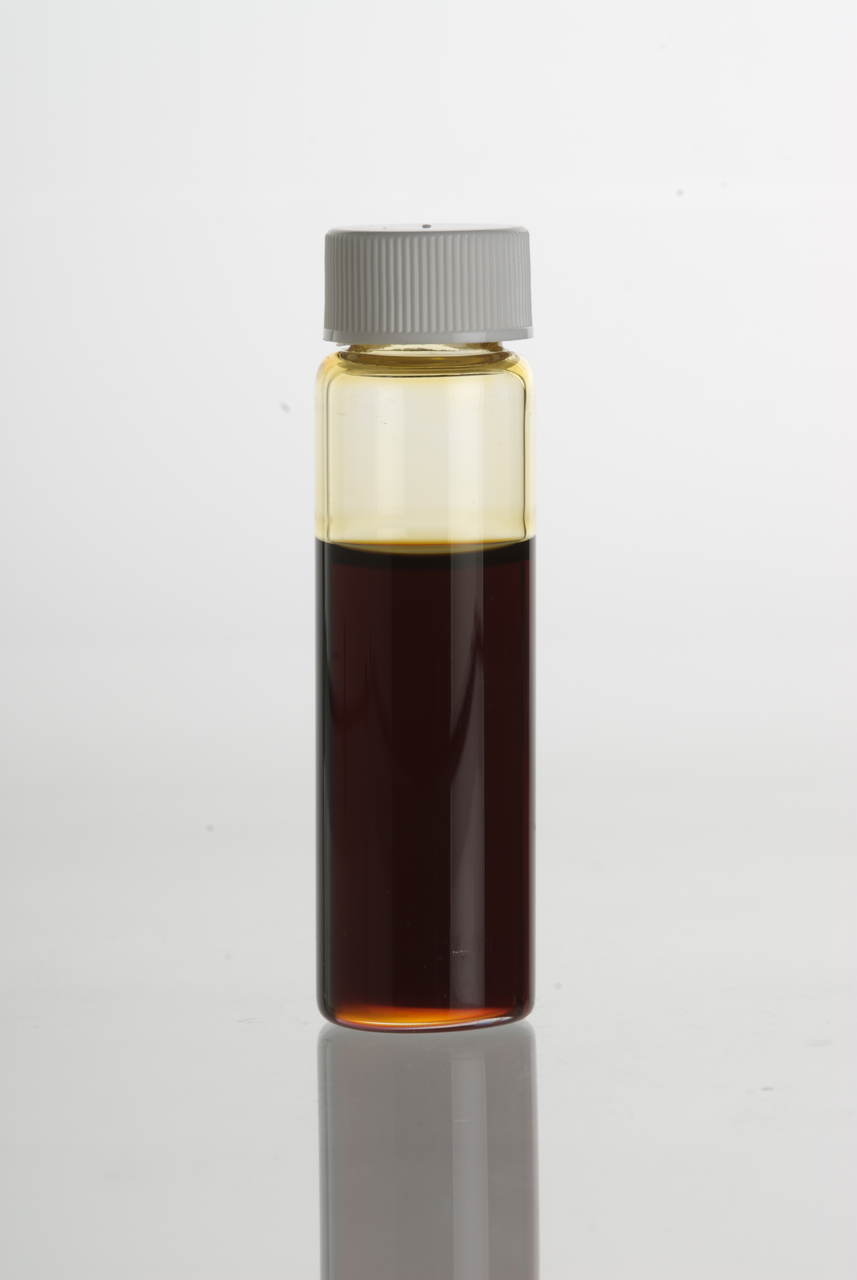|
Storax
Storax ( la, storax; el, στύραξ, ''stúrax''), often commercially sold as styrax, is a natural resin isolated from the wounded bark of ''Liquidambar orientalis'' Mill. (Asia Minor) and ''Liquidambar styraciflua'' L. (Central America) (Hamamelidaceae). It is distinct from benzoin (also called "storax"), a similar resin obtained from the Styracaceae plant family. Composition Purified storax contains circa 33 to 50% storesin, an alcoholic resin, both free and as cinnamic esters. Contains 5 to 15% cinnamic acid, 5 to 15% cinnamyl cinnamate, circa 10% phenylpropyl cinnamate; small amounts of ethyl cinnamate, benzyl cinnamate, and styrene, Some may contain traces of vanillin. Some sources report a resin containing triterpenic acids ( oleanolic and 3-epioleanolic acids). Uses Storax has a pleasant, floral/lilac, leathery, balsamic smell. Storax and its derivatives ( resinoid, essential oil, absolute) are used as flavors, fragrances, and in pharmaceuticals (Friar's Balsam). ... [...More Info...] [...Related Items...] OR: [Wikipedia] [Google] [Baidu] |
Styrene
Styrene () is an organic compound with the chemical formula C6H5CH=CH2. This derivative of benzene is a colorless oily liquid, although aged samples can appear yellowish. The compound evaporates easily and has a sweet smell, although high concentrations have a less pleasant odor. Styrene is the precursor to polystyrene and several copolymers. Approximately 25 million tonnes of styrene were produced in 2010, increasing to around 35 million tonnes by 2018. Natural occurrence Styrene is named after storax balsam (often commercially sold as ''styrax''), the resin of Liquidambar trees of the Altingiaceae plant family. Styrene occurs naturally in small quantities in some plants and foods (cinnamon, coffee beans, balsam tree (other), balsam trees and peanuts) and is also found in coal tar. History In 1839, the German apothecary Eduard Simon isolated a volatile liquid from the resin (called ''storax'' or ''styrax'' (Latin)) of the Liquidambar styraciflua, American sweetgu ... [...More Info...] [...Related Items...] OR: [Wikipedia] [Google] [Baidu] |
Liquidambar Styraciflua
American sweetgum (''Liquidambar styraciflua''), also known as American storax, hazel pine, bilsted, redgum, satin-walnut, star-leaved gum, alligatorwood, or simply sweetgum, is a deciduous tree in the genus ''Liquidambar'' native to warm temperate areas of eastern North America North America is a continent in the Northern Hemisphere and almost entirely within the Western Hemisphere. It is bordered to the north by the Arctic Ocean, to the east by the Atlantic Ocean, to the southeast by South America and the Car ... and tropical montane regions of Mexico and Central America. Sweetgum is one of the main valuable forest trees in the southeastern United States, and is a popular ornamental tree in temperate zone, temperate climates. It is recognizable by the combination of its five-pointed star-shaped leaves (similar to maple leaves) and its hard, spiked fruits. It is currently classified in the plant family (biology), family Altingiaceae, but was formerly considered a mem ... [...More Info...] [...Related Items...] OR: [Wikipedia] [Google] [Baidu] |
Benzoin Resin
Benzoin or benjamin (corrupted pronunciation) is a balsamic resin obtained from the bark of several species of trees in the genus ''Styrax''. It is used in perfumes and some kinds of incense and as a flavoring and medicine (see tincture of benzoin). It is distinct from the chemical compound benzoin, which is ultimately derived chemically from benzoin resin; the resin, however, does not contain this compound. Benzoin is sometimes called gum benzoin or gum benjamin, and in India ''Sambrani or'' loban, though loban is, via Arabic ''lubān'', a generic term for frankincense-type incense, e.g., fragrant tree resin. Benzoin is also called storax, not to be confused with the balsam of the same name obtained from the Hamamelidaceae family. Benzoin is a common ingredient in incense-making and perfumery because of its sweet vanilla-like aroma and fixative properties. Gum benzoin is a major component of the type of church incense used in Russia and some other Orthodox Christian societ ... [...More Info...] [...Related Items...] OR: [Wikipedia] [Google] [Baidu] |
Friar's Balsam
Tincture of benzoin is a pungent solution of benzoin resin in ethanol. A similar preparation called Friar's Balsam or Compound Benzoin Tincture contains, in addition, Cape aloes or Barbados aloes and storax resin. Friar's balsam was invented by Joshua Ward around 1760. Use Compound Benzoin Tincture is often applied to skin under an adhesive bandage. It protects the skin from allergy to the adhesive and makes the bandage adhere longer. It is also used by athletes for its reputation of toughening skin. Orthopedists often apply it under a cast, because it protects the skin and diminishes itching. It is also an old remedy for congested sinuses and lungs. A few drops on the surface of a bowl of hot water, over which one holds one's face and breathes the steam; preferably, with a towel over one's head, to keep the steam in. It can be applied to skin fissures, canker sores and fever blisters as a styptic and antiseptic. It is thought that light turns the Benzoin in these modern con ... [...More Info...] [...Related Items...] OR: [Wikipedia] [Google] [Baidu] |
Cinnamic Acid
Cinnamic acid is an organic compound with the formula C6H5-CH=CH- COOH. It is a white crystalline compound that is slightly soluble in water, and freely soluble in many organic solvents. Classified as an unsaturated carboxylic acid, it occurs naturally in a number of plants. It exists as both a ''cis'' and a ''trans'' isomer, although the latter is more common. Occurrence and production Biosynthesis Cinnamic acid is a central intermediate in the biosynthesis of a myriad of natural products including lignols (precursors to lignin and lignocellulose), flavonoids, isoflavonoids, coumarins, aurones, stilbenes, catechin, and phenylpropanoids. Its biosynthesis involves the action of the enzyme phenylalanine ammonia-lyase (PAL) on phenylalanine. Natural occurrence It is obtained from oil of cinnamon, or from balsams such as storax. It is also found in shea butter. Cinnamic acid has a honey-like odor; it and its more volatile ethyl ester (ethyl cinnamate) are flavor components ... [...More Info...] [...Related Items...] OR: [Wikipedia] [Google] [Baidu] |
British Pharmacopoeia
The ''British Pharmacopoeia'' (''BP'') is the national pharmacopoeia of the United Kingdom. It is an annually published collection of quality standards for medicinal substances in the UK, which is used by individuals and organisations involved in pharmaceutical research, development, manufacture and testing. Pharmacopoeial standards are publicly available and legally enforceable standards of quality for medicinal products and their constituents. The ''British Pharmacopoeia'' is an important statutory component in the control of medicines, which complements and assists the licensing and inspection processes of the UK's Medicines and Healthcare products Regulatory Agency (MHRA). Together with the ''British National Formulary'' (BNF), the ''British Pharmacopoeia'' defines the UK's pharmaceutical standards. Pharmacopoeial standards are compliance requirements; that is, they provide the means for an independent judgement as to the overall quality of an article, and apply throu ... [...More Info...] [...Related Items...] OR: [Wikipedia] [Google] [Baidu] |
Aristotle
Aristotle (; grc-gre, Ἀριστοτέλης ''Aristotélēs'', ; 384–322 BC) was a Greek philosopher and polymath during the Classical period in Ancient Greece. Taught by Plato, he was the founder of the Peripatetic school of philosophy within the Lyceum and the wider Aristotelian tradition. His writings cover many subjects including physics, biology, zoology, metaphysics, logic, ethics, aesthetics, poetry, theatre, music, rhetoric, psychology, linguistics, economics, politics, meteorology, geology, and government. Aristotle provided a complex synthesis of the various philosophies existing prior to him. It was above all from his teachings that the West inherited its intellectual lexicon, as well as problems and methods of inquiry. As a result, his philosophy has exerted a unique influence on almost every form of knowledge in the West and it continues to be a subject of contemporary philosophical discussion. Little is known about his life. Aristotle was born in th ... [...More Info...] [...Related Items...] OR: [Wikipedia] [Google] [Baidu] |
Theophrastus
Theophrastus (; grc-gre, Θεόφραστος ; c. 371c. 287 BC), a Greek philosopher and the successor to Aristotle in the Peripatetic school. He was a native of Eresos in Lesbos.Gavin Hardy and Laurence Totelin, ''Ancient Botany'', Routledge, 2015, p. 8. His given name was Tyrtamus (); his nickname (or 'godly phrased') was given by Aristotle, his teacher, for his "divine style of expression". He came to Athens at a young age and initially studied in Plato's school. After Plato's death, he attached himself to Aristotle who took to Theophrastus in his writings. When Aristotle fled Athens, Theophrastus took over as head of the Lyceum. Theophrastus presided over the Peripatetic school for thirty-six years, during which time the school flourished greatly. He is often considered the father of botany for his works on plants. After his death, the Athenians honoured him with a public funeral. His successor as head of the school was Strato of Lampsacus. The interests of Theophrastus ... [...More Info...] [...Related Items...] OR: [Wikipedia] [Google] [Baidu] |
Historia Plantarum (Theophrastus)
Theophrastus's ''Enquiry into Plants'' or ''Historia Plantarum'' ( grc-gre, Περὶ φυτῶν ἱστορία, ''Peri phyton historia'') was, along with his mentor Aristotle's ''History of Animals'', Pliny the Elder's '' Natural History'' and Dioscorides's ''De materia medica'', one of the most important books of natural history written in ancient times, and like them it was influential in the Renaissance. Theophrastus looks at plant structure, reproduction and growth; the varieties of plant around the world; wood; wild and cultivated plants; and their uses. Book 9 in particular, on the medicinal uses of plants, is one of the first herbals, describing juices, gums and resins extracted from plants, and how to gather them. ''Historia Plantarum'' was written some time between c. 350 BC and c. 287 BC in ten volumes, of which nine survive. In the book, Theophrastus described plants by their uses, and attempted a biological classification based on how plants reproduced, a first i ... [...More Info...] [...Related Items...] OR: [Wikipedia] [Google] [Baidu] |
Absolute (perfumery)
Used in perfumery and aromatherapy, absolutes are similar to essential oils. They are concentrated, highly aromatic, oily mixtures extracted from plants. Whereas essential oils are produced by distillation, boiling or pressing, absolutes are produced through solvent extraction, or more traditionally, through enfleurage. Production First, plant material is extracted with a hydrocarbon solvent, such as hexane, to yield a concrete. The concrete is then extracted with ethanol. The ethanol extract is cooled (e.g., to −15 °C) to solidify waxes, and cold filtered to yield a liquid extract. When the ethanol evaporates, an oil—the absolute—is left behind. Traditionally, the absolute was obtained by enfleurage, where the resulting pommade was extracted with ethanol to yield the absolute. Character and use Some raw materials are either too delicate or too inert to be steam-distilled and can only yield their aroma through solvent extraction. Examples of these are jasmine and ... [...More Info...] [...Related Items...] OR: [Wikipedia] [Google] [Baidu] |





